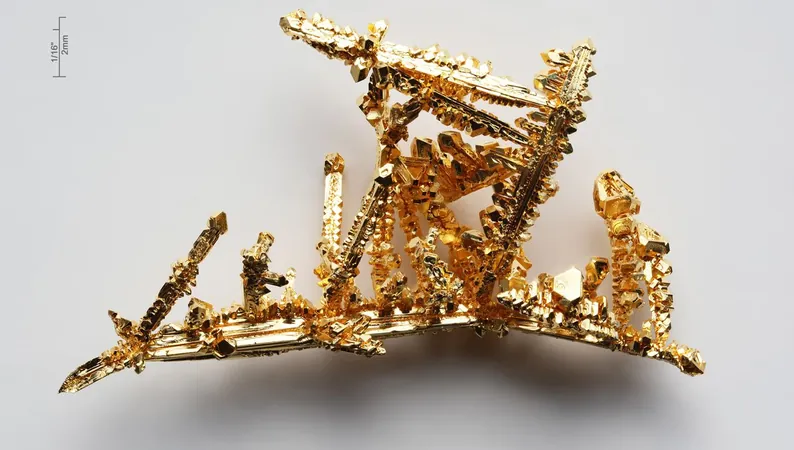
The Shocking Truth About Synthetic Gold: Can We Really Make It in the Lab?
2025-07-09
Author: Ken Lee
Gold’s Celestial Origins
Did you know that the gold we cherish on Earth is actually stardust? Yes, most of the gold on our planet originated from massive stellar explosions, such as supernovae or the collision of neutron stars. These cosmic events unleashed tremendous energy, fusing lighter elements into heavy metals like gold, which was later trapped within the Earth and eventually emerged to dazzle us.
The Alchemical Quest: Making Gold in the Lab
Thanks to cutting-edge technology, scientists have discovered a way to replicate this stellar process and create gold from other elements in a lab setting. However, the catch? This method demands an astronomical amount of energy, making it highly inefficient and often deemed impractical.
Gold's Atomic Secrets
Every gold atom contains a nucleus with 79 protons—this is why it’s known as element number 79 on the periodic table. Theoretically, by manipulating the number of protons, you could transform gold into other elements: remove one and voilà, you get platinum (atomic number 78); add one, and you have mercury (atomic number 80). But this alteration is no easy feat!
The Challenge of Transforming Gold
Gold is exceptionally stable and non-reactive, making it resistant to most changes. To unlock its secrets, scientists turn to nuclear reactions that involve adding or removing protons from the nucleus. In a groundbreaking 1941 experiment, when mercury was bombarded with neutrons, it shed a proton and—surprise—produced gold! Although this gold is radioactive, it is still gold!
Nuclear Reactions and Particle Accelerators
Another enthralling method to fabricate gold is through particle accelerators, like those at CERN’s Large Hadron Collider. Here, physicists smash lead nuclei together in a frenzy of high-energy collisions. This results in a quark-gluon plasma, a state of matter thought to have existed just after the Big Bang, which leads to the creation of gold by managing to remove protons during this chaotic dance.
Costs vs. Value: Is It Worth It?
Despite the sophisticated science behind it, producing synthetic gold remains an expensive undertaking. It could take millions of dollars worth of energy and advanced equipment to produce just a tiny amount of gold—often not reflecting its value. In fact, some methods might even cost far more than the gold they produce!
Historical Achievements in Gold Creation
In the 1980s, Nobel Prize-winning chemist Glenn Seaborg famously converted bismuth into gold at the Lawrence Berkeley Laboratory. Using a particle accelerator to bombard bismuth with carbon nuclei, he managed to chip away protons, resulting in a remarkable transformation to gold.
In conclusion, while the prospect of creating gold in a lab is mesmerizing and speaks to the alchemical dreams of old, the reality is a mix of scientific brilliance and colossal challenges.


 Brasil (PT)
Brasil (PT)
 Canada (EN)
Canada (EN)
 Chile (ES)
Chile (ES)
 Česko (CS)
Česko (CS)
 대한민국 (KO)
대한민국 (KO)
 España (ES)
España (ES)
 France (FR)
France (FR)
 Hong Kong (EN)
Hong Kong (EN)
 Italia (IT)
Italia (IT)
 日本 (JA)
日本 (JA)
 Magyarország (HU)
Magyarország (HU)
 Norge (NO)
Norge (NO)
 Polska (PL)
Polska (PL)
 Schweiz (DE)
Schweiz (DE)
 Singapore (EN)
Singapore (EN)
 Sverige (SV)
Sverige (SV)
 Suomi (FI)
Suomi (FI)
 Türkiye (TR)
Türkiye (TR)
 الإمارات العربية المتحدة (AR)
الإمارات العربية المتحدة (AR)